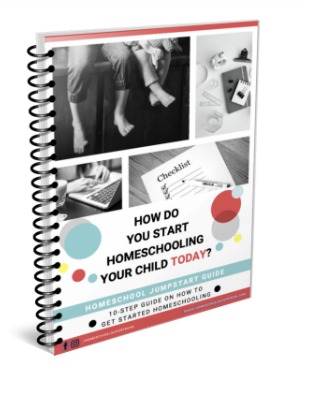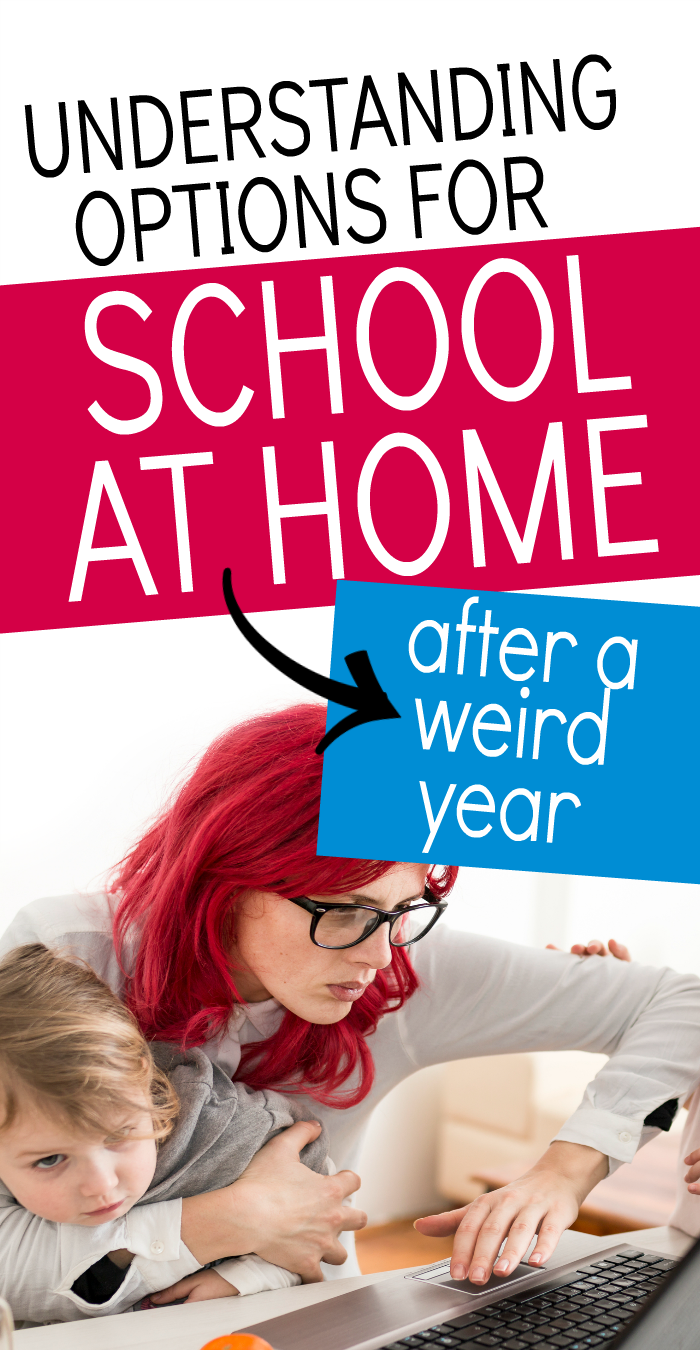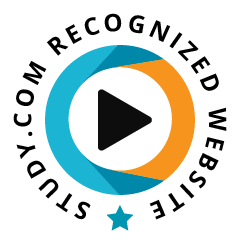School at home is stressful and you may even think “I hate homeschooling!” Reopening schools will definitely look different. Here’s how to start school planning (including understanding different at home learning options like hybrid school) and why homeschooling in crisis and homebound school is nothing like home school! Plus tips to make decisions for school in the fall.

REAL TRUTH ABOUT SCHOOL AT HOME
So you’ve been “homeschooling” and you hate it.
Homeschooling is stressful.
It’s hard.
I mean…
How do you get your kids to listen to you and want to learn?
How the heck are you even supposed to school from home with little to no direction?
I have a little secret for you:
What’s been happening over the past few months is not homeschooling.
I get it.
You’re at home.
You’re schooling.
Hence: homeschooling.
Right?
Wrong.
What It’s Like To Learn From Home
What all of us have really been doing is crisis schooling … and it was something that none of us were prepared for — not school districts, not teachers, not you as a parent, and not even those of us who have been homeschooling for a while already.
(Seriously. I was not prepared to have all our outside classes moved to Zoom either!)
Clearly, when school starts in the fall, things will be much, much different.
All of this — the hating home school, the school changes, and just the complete unknown right now — may have you thinking about your school options for the upcoming year.
(Like, seriously, how will I survive? Right?)
I get it.
AND, I’m going to help you sort things out and better understand some options available to you.
But, before we get to any of those options, let’s start with the basics . . .
What Is School At Home?
School at home means that parents take responsibility for their child’s education in their home. For some, this is a full school in home where the parent coordinates, implements, presents, and oversees every aspect of the child’s education. For others, this may mean school at home online where the child is taking public school programs at home (like tuition-free online & virtual public school programs) or homeschool supplemental classes where the student takes independent online classes or in-person classes in addition to the homeschool curriculum.
School in home can start as early as preschool at home all the way to homeschool high school.
(Some even homeschool for 3 year olds.)
Why 2020 Homeschooling Wasn’t Really Home School (And Why You Probably Hated It)
- You got zero say in any this, which makes any situation suck.
- There was no time for preparation (mental, physical and emotional).
- Confusion was high and there may not have been clear direction on what to do for school.
- You’re in a time period that no one has ever experienced AND you were trying to figure out how to be a teacher on top of all of that.
- Emotions ran high for everyone, making everything (and especially school) more difficult for everyone.
- You had to figure out remote learning and you may not have been equipped with student laptops or even an internet connection.
- You may not (or would not) have chosen this path to school at home, which added an entire layer of bitterness to the already difficult situation. (I get it. For real.)
- Extracurriculars were all canceled, so you had to deal with that disappointment/attitude from kids about that, too.
- You didn’t get to meet up with friends or go on field trips or even spend a lot of time outside — all which are normal things that homeschooler do everyday!
If you’re thinking about the school year next year, I want you to know this:
What you experienced during this weird time was not what homeschooling is really like!
So, if you were considering homeschooling, don’t let the “crisis schooling” experience deter you!
What is homeschooling really like?
- A mixture of school work at home and outside classes.
- A clear, set homeschool curriculum so you know what to do next without confusion. (If that’s the path you choose! You don’t have to follow a homeschool curriculum!)
- Your child getting to choose some of what they want to learn and developing a love of learning.
- Lots of free learning once you get into your groove (which equals less stress).
- Lots of field trips, nature hikes, park visits and meet ups with friends!
And, almost none of that happened for any of us during this time.
WHAT I REALLY WANT YOU TO KNOW IS THAT WHAT HAPPENED WITH THIS EMERGENCY SCHOOL TRANSITION PROBABLY DIDN’T ALLOW YOU TO EXPERIENCE THE JOY (AND FUN!) OF REAL HOME SCHOOL.

10-STEP GUIDE ON HOW TO GET STARTED HOMESCHOOLING TODAY
You’ll get immediate access to our 25-page JUMPSTART HOMESCHOOL HOW TO GUIDE digital download on what you need to do today to homeschool and understanding home school requirements (so you don’t get into trouble!) — including homeschool worksheets, checklists and calendar printables to start your school schedule!
ON SALE FOR LIMITED TIME!
Written and created by Jacqueline Wilson, a former college professor and current education writer and course creator and homeschool mom of over 8 years.

SO, WHAT ARE MY SCHOOL OPTIONS AFTER ALL THIS?
So here we are, stuck in a weird place of “Ugh, should I transition to homeschool?” or “How will I get through this again in the fall?”
(Or, probably somewhere in between those two…)
If you’re just researching school at home options and thinking about transitioning to homeschooling, you probably feel overwhelmed.
Your online research has brought up things like homeschool supplemental classes, K12 online school reviews, and tuition-free online & virtual public school programs and many other things that probably seem foreign to you.
And, it is soooooo much to sift through.
Whew.
It’s A LOT.
It’s so easy to get confused about school from home options, so we’re going to cover some basic school at home programs (including school at home online) to help you make more informed decisions.
Let’s take a closer look at how to do homeschool — whether you want to know how to transition from public to homeschool, want to public school from home, or need some tips about how to help your kid learn best in this weird time we are in.
We’ll also cover the school / homeschool pros and cons for each program, so be sure to review those at the end of each section.

Understanding Different School At Home Programs To Help You Make The Best Decision
We might as well accept it: Next school year will look different.
Will you homeschool?
Will you do school at home (public school from home)?
Or, a hybrid school mix?
Will you virtual homeschool or do a virtual school from home?
Here are the different options for how to do school from home…
School At Home Option #1: Home School
With true homeschooling, parents are the “homeschool teacher” and teach/oversee their child’s school at home and is not affiliated with any public school program.
Homeschooling is legal in every state in America, but it is illegal in some other countries. The first thing you should do before anything else is check your homeschool state or country laws.
Homeschooling in North Carolina will look very different from homeschooling in California, which will both differ from homeschooling in different countries.
In the United States, every state law is different for home school. While there may be specific requirements that a family must meet, most states allow parents to decide how they will homeschool their children, including selecting a homeschool curriculum.
A homeschool curriculum is set of books and learning tools that allows a child to work through a preset lessons for a specific subject.
There are printed, “boxed” homeschool curricula that come with everything you need for subjects or even a set of subjects.
There are also full online curricula courses where your child completes everything on the computer.
You can also enroll in stand-alone computer courses and programs that your child can use for a specific topic (like Spanish, Bible, Math, etc.) to supplement at-home learning.
The cost of homeschool curriculum and online homeschool programs will vary—ranging from free to hundreds of dollars.
There are also many different methods of learning that homeschoolers follow like classical education, unschooling, Montessori homeschool, Waldorf homeschool, eclectic homeschooling, and more.
When you first begin, it is not necessary to know what homeschool method you will use.
This is something that will naturally fall into place over the first few months as you observe how your child best learns.
A homeschool schedule will look different for every homeschooling family.
One of the biggest benefits of homeschool is the flexibility to build a schedule or curriculum around what works best for your family!
PROS OF HOMESCHOOLING: Complete control of your child’s education; can tailor learning to meet your child’s needs (speeding up or slowing down, as needed); great for special needs or special schedules (like frequent family travel); can embrace and encourage child’s specific interests.
CONS OF HOMESCHOOLING: Time to select curriculum; active involvement in child’s education may be difficult with schedule/working; time-consuming; can be costly, depending on choices (like curriculum); have to be proactive in finding support and social groups.
FOR MORE HOMESCHOOL INFO, CHECK OUT:
School At Home Option #2: School At Home Online
How do you homeschool if you want your child to physically do school from home, but you don’t want to be responsible for choosing a curriculum or “teaching” the course materials to your child?
There are public school at home options available online and may be a valid option for you if you want to continue public school, but would rather not send your child back to a brick and mortar public school after all of this.
With virtual public school at home, your child completes the same curriculum and coursework requirements that they would at a brick-and-mortar (physical) public school, but they are completing the work from home instead.
These programs are are kind of a school-home partnership, but they follow the same state laws, regulations, standards (like common core), and standardized testing requirements as regular public schools.
An example of public school from home that you may have heard of is K12 public school at home.
As the parent, you will not need to decide on a curriculum, or homeschool workbooks, or what your child needs to study because this is predetermined for you (just like if they attended traditional public school).
Your child will virtually attend classes online, receive instruction from state-certified teachers, and submit coursework online.
This type of school at home online (associated with public schools) is free, but may have various costs for materials on occasion (like in public school).
PROS OF SCHOOL AT HOME: Free; parents don’t have to select a curriculum or “teach”; can get support from teacher/school.
CONS OF SCHOOL AT HOME: Less control over child’s education/what a child learns; harder to tailor learning to child’s learning style or speed up/slow down as needed; standardized testing is required, so often classes will “teach to test”; issues with technology and remote learning connections.
School At Home Option #3: Hybrid Homeschooling
There is also a school program called hybrid homeschooling.
Hybrid homeschooling is when a student spends part of their time in a brick-and-mortar, physical school location and then part of their time at home completing school work.
Hybrid home schools are associated with a public school or a private school.
The public school hybrid will have the same requirements they would have if your child attended a public school full time, just part of their work will be completed at home.
The private school may not have to follow the same regulations as public (state) schools, but they will follow the curriculum selected by the private school. These are sometimes marketed as a “homeschool school.” (If you search homeschool near me you may come up with some of these schools.) The homeschool requirements will vary by school.
There may or may not be a cost associated with hybrid homeschooling, depending on if it is categorized as public or private school.
PROS OF HYBRID HOMESCHOOLING: Parents don’t have to select a curriculum or “teach”; can be free; only part of time is spent at home.
CONS OF HYBRID HOMESCHOOLING: Less control over child’s education; can’t fully tailor learning to child’s learning style; standardized testing is often required; may be expensive (if classified as a private school, which homeschool hybrids are); may be difficult to work around parent schedules because of intermittent days at school then at home.
Lastly…
What is the difference between hybrid homeschool and online class?
Sometimes hybrid schooling is mistaken for online school at home programs.
Although hybrid schools may use online classes, they are not the necessarily the same thing.
However, many hybrid school systems today incorporate a mix of online classes and in-person classes.
A student may complete work with textbooks while they are in the physical class and then complete online classes on the days they are at home.
For more on this topic, definitely check out:
Home School vs Virtual School at Home: Understanding the differences to choose the best school option for your family
There are also school at home online classes that are not affiliated with any hybrid or any school system.
These are usually private, for-profit companies that offer alternative learning options for parents.
For example, a homeschooler may follow a specific printed curriculum and homeschool worksheets for language arts, but then pay for an online course for math from a private company.
While We’re On This Topic, You’ll Also Want to Check Out:
How do I pick a homeschool program? Important Info About Homeschool Programs To Know Before Signing Up
LET’S TALK! WHAT QUESTIONS DO YOU HAVE ABOUT SCHOOL AT HOME?
STARTING HOME SCHOOL? CHECK OUT OUR HOW TO HOMESCHOOL GUIDE







